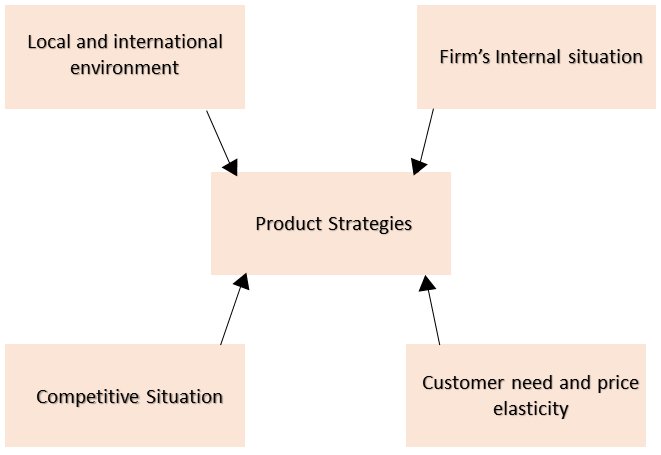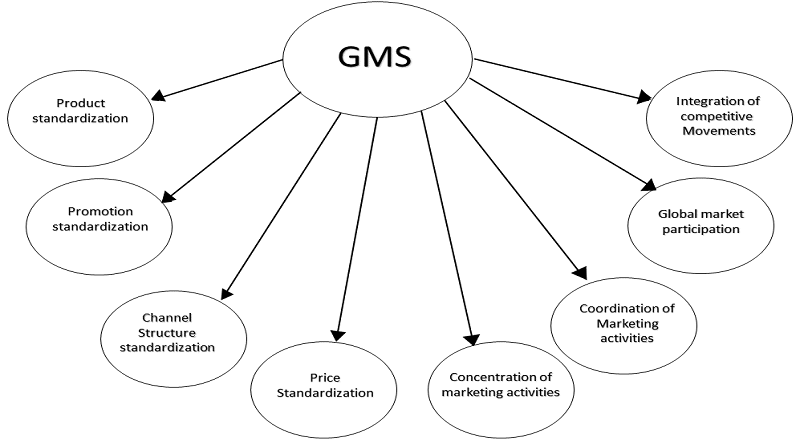Shirofune Enhances Shopify Integration with Google Analytics 4’s Data-Driven Attribution Model
Global Marketing Strategy

Before the internet, only a few prosperous businesses required international marketing plans. These were the most well-known companies, active in worldwide marketplaces, employing people all around the world. Coca-Cola is one such business. The beverage company has served a global client base for decades, customizing its advertising, distribution, and pricing to suit each country while upholding its commitment to spreading happiness around the world.
In the 2000s, the majority of businesses are international from the beginning. Anyone may establish a digital presence for their business, whether it be a single-page website, an online store, or a social media profile. Companies of all sizes can launch international marketing campaigns and get more clients without hiring professional marketing teams if they have realistic finances and creative marketing strategies.
Before launching global marketing efforts, a determined global marketing plan must be developed. Your chances of connecting with your target audience and turning prospects into customers increase with a sound approach.
What is a global marketing strategy?
A global marketing strategy is a comprehensive marketing plan used to expand a company into international markets. It serves as a guide for regionalized marketing strategies that target new markets.
A global marketing strategy goes beyond only cross-border product sales. The four marketing pillars (Product, Pricing, Promotions, and Place) are layered with other marketing procedures like analysis, planning, outcomes monitoring, and social proof collection.
To implement a global marketing strategy, your business must adjust its overall marketing plan and brand identity to the conditions and cultural norms of each country or region in which it conducts business.
Gaining a competitive edge, building global brand recognition, and positioning your business as useful customer service are all objectives of your strategy. Additionally, it should emphasize your connections to and acts of giving back to the areas you work in.
How do you plan a global marketing strategy?
Today, digital plays a vital role in worldwide marketing strategy. The three main categories of these are owned, paid, and earned marketing channels. Where you spend the majority of your funds and effort is determined by your market demographic and region.
Make sure your worldwide marketing plan is homogeneous by using a single brand name, comparable items, the same packaging, coordinated product launches, and aligned messaging and pricing. To create a geographic segment and focus your marketing efforts, group comparable nations together.
To begin creating your global marketing strategy, ask:
- What is your organization trying to achieve in the global market?
- Are you creating a new market or tapping into an existing one?
- Which countries or regions support your business most?
- What’s the majority demographic in your market?
- Why do customers love your product?
- Where are your competitors most active?
- What is your competitive advantage in potential markets?
- How can you improve and scale what works best?
- What are the peculiarities of your potential markets?
- Should you have a single brand story or different messaging for different markets?
The answers to these questions will set you on the right path to creating a well-rounded global marketing strategy.
Steps to plan your global marketing strategy
The following steps help you plan a strong global marketing strategy:
Conducting market research
It’s essential to evaluate and comprehend your target markets firsthand. Learn about their customs and behavior. Which media types are best for marketing? Where do they connect both online and off? You can avoid making costly blunders by conducting thorough market research.
Analyze the origins of your market divisions and take into account the elements that influence the conversion of prospects into consumers. Select the areas where you have the greatest business potential.
Assemble a team
Which geographic areas are ideal for your product and business will be revealed by your market research. The next step is to assemble the team and expertise you’ll need to carry out your marketing plan.
Having team members with experience and knowledge who live or work in your target areas is a good idea. You might decide to work with a marketing firm or local freelancers. The finest choice will depend on your review of your budget. Invite your team to use your digital workspace while granting each member the necessary access, visibility, and permissions.
Create your marketing plan
You are now prepared to create your global marketing plan after selecting your markets and assembling a marketing team. Start by determining the objectives of your business and integrating them into the market environment.
Study your marketing personas, and in your marketing message, convey the benefits of your product. Outline a marketing strategy that accentuates your capabilities while taking into account the positioning of your rivals.
The value proposition of your product may vary depending on the market, so adjust. In emerging nations where cash payments are the norm, Uber, for instance, encourages customers to use cash instead of cards.

Benefits of a global marketing strategy
Even if it’s never been simpler to promote your brand internationally, developing a global marketing strategy has advantages and disadvantages.
Some of the benefits of global marketing strategies include:
- Increased brand awareness: What company wouldn’t desire Starbucks’ or McDonald’s’ name recognition and consumer base? You can introduce your product to markets you couldn’t otherwise access by using a global marketing approach.
- Improved product quality: By learning more about new markets, you may improve your products and business procedures, giving your consumers greater value.
- The advantage over competitors: Having a global presence provides you an advantage over regional rivals who lack a global marketing strategy or are unable to do so. You can also quickly adjust to changes in consumer preferences or market trends.
- Lower costs: Your marketing and promotion costs will go down because customers can find you online from all over the world. These savings could be used to provide greater service to your recent clients.
Challenges of a global marketing strategy
A worldwide marketing approach does, however, have certain potential drawbacks, some of which include:
Compliance issues: Different markets have different laws governing data security and protection, such as the California Consumer Privacy Act and the GDPR in the European Union (CCPA). When conducting business abroad, you must make sure that your company complies with all legal requirements.
Adapting to new markets: Your marketing plan must be modified to meet new geographic areas. Ever wonder why there aren’t as many Starbucks locations as there are elsewhere in the world in Australia? People thought the business was excessively pricey because local coffee is preferred in the Australian coffee market. Your strategy must be localized if you want to succeed.
Language barriers: In situations where there are language limitations, businesses must exercise extra caution. For example, when Pepsi introduced the slogan “Pepsi Brings You Back to Life” in China, the translation was “Pepsi Brings You Back From the Grave,” which could have caused humiliation.
What you need to know about global market segmentation
The technique of splitting your target market into clearly defined groups with particular characteristics is known as global market segmentation. Identification of various groups within your target market is the goal of segmentation, which enables you to deliver more specialized and niche-focused content and products. There are four categories of segmenting the worldwide market:
- Behavioral segmentation: Based on their prior interactions with your brand, behavioral market segmentation divides your market into several groups. This type of customer has characteristics like purchasing patterns, past purchases, knowledge of your company, and product ratings.
- Demographic segmentation: Market segmentation by demographics focuses on the client. Whether you manage a B2B or B2C organization will determine the characteristics listed in this category. Industry type, company size, years of operation, and revenue range would be included for B2-B businesses. Age, education, gender, occupation, family status, and income are examples of characteristics in a B2C business.
- Geographic segmentation: Geographic market segmentation enables you to divide your target market based on where they are, which can occasionally be a useful purchasing element.
- Psychographic segmentation: Markets are divided via psychographic market segmentation according to their personalities. This segmentation includes characteristics such as lifestyle, attitudes, values, and hobbies.
One of the finest ways to set your company apart when you enter a new industry is through good communication. By focusing on the messaging that will encourage your customers to make a purchase, market segmentation enables you to develop more effective marketing communications. You receive a higher response rate from your marketing initiatives when you target particular client subsets as opposed to using general descriptors that apply to everyone yet appeal to no one.





